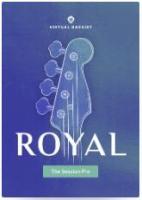|
Adam Monroe Music Slap Bass v1.1 Kontakt 击弦贝司

收藏
资源编号 00895
Adam Monroe Music Slap Bass v1.1 Adam Monroe's Slap Bass was sampled from a Fender Jazz electric bass guitar with Carvin J99 pickups and DR Hi-Beam bass strings directly into a Radial Pro48 DI Box. An extended range was obtained by tuning the E-string all the way down to a C. The low B (B0) of a standard 5-string bass was omitted do to "floppiness" from down-tuning. "Slap" and "pop" articulations were carefully and meticulously recorded for each note, although in the extreme upper range of the bass, do to tension of the string, normal notes starts to become indistinguishable from a pop articulations. Regular notes were recorded with a guitar pick, in order to maintain a semi-percussive and metallic sound. Regular pick notes were recorded in 5 note round-robin with 4 velocity layers. The velocity layers themselves don't have much of a dynamic range (between -7 -1 dB), as bass guitars are typically compressed signals that end up somewhat level in modern recordings. Slap articulations are 5 turn round-robin, but exist as one velocity layer. The decision was made to simply pick the best representations of a slap or pop sound, rather than mix in many different sounds, in order to achieve a "better" sounding vst instrument as opposed to a more "realistic" one. Bass strings were periodically cleaned with denatured alcohol, as the metallic Hi-Beam sound tends to darken rather quickly. Pains were taken to ensure that the transition in tone between strings was minimized by selecting the best places to start sampling a new string. One octave of harmonics was achieved by selecting the best harmonic tones and tuning/detuning strings around these notes, thus it would be impossible to recreate these harmonics on a standard-tuned bass, but they do sound cool. Slides were recorded for most strings, but were ommited for things like open strings, or when sliding down or up would overshoot standard tuning. Major Thirds and Perfect Fifths were chosen for the sake of usability. Slides were recorded at a tempo of |














